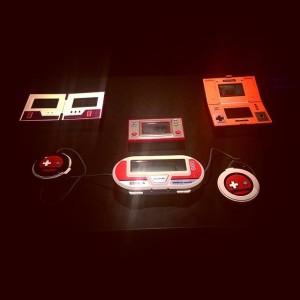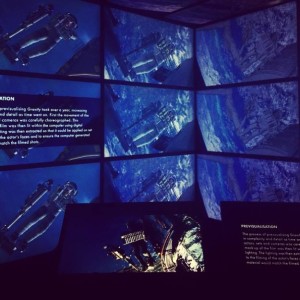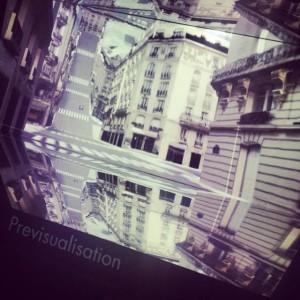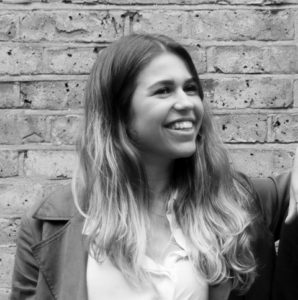
by Lisa Devaney | 10 Oct, 2017 | News
(This blog post is by Lisa Devaney, the Founder and Director of the Hai Media Group)
Over the last few years, I’ve had the pleasure of helping to mentor Valentine from SSSHAKE, an early-stage London tech startup, right from when the seed of the idea was taking root.
When I first met Valentine Del del Giudice, she immediately demonstrated more than a starry-eyed view of launching her start-up. She showed a well-thought out business plan, credible research into her marketplace and an enthusiastic drive that we knew would not quit – no matter what!
Well, that “no matter what” moment seems to have transpired when on 23rd June 2016, the vote for the UK to leave the European Union took place. At this point, Valentine was not even out the start gate yet with her SSSHAKE!
What’s the startup idea?
Her idea, like most of the best, is simple – there’s an app which connects you to new, unexpected matches when you shake your smartphone, Additionally, SSSHAKE hosts events and collaboration tools to offer London creatives the chance to form a solid creative network to connect and potentially collaborate with others to launch new projects. In a big city like London, Valentine’s channel literally shakes up how creative people could find and work together – no matter where they come from.
Valentine, an EU citizen from Paris, woke up on the that morning and experienced a big shock. She says she felt very sad, angry and that it seemed like everything she had valued about the UK – its welcoming, multicultural attitude – had vanished. Would she have to leave? Would she have to lose members of her team as they lost the right to work in the UK?
Moving forward
That was more than a year ago, but, like her app, she shook off the fear of uncertainty, and decided to remain focused on launching SSSHAKE in the spring of 2017, and not let Brexit blues interfere with her ambition to make her startup succeed.
This included running a successful crowdfunding campaign for SSSHAKE, and smashing it above her 5K target goal – she secured more than £6K. The app also secured some press at launch time. Go Valentine!
The mood these days

SSSHAKE Founder Valentine del Giudice
This week, I caught up with Valentine to find out what her mood is now in these pre-Brexit times, and how it feels to be a tech startup in “pre-Brexit” Britain, with herself an EU citizen at the helm.
SSSHAKE is proving popular, attracting a few hundred attendants at every event she runs and significant downloads from the Apple App Store, even in these still very early days. Having started the idea for her business while she was still attending university at the London College of Communication, this is her first big pursuit out of school days, and she’s smartly been cultivating support and mentoring from various advisors.
Shock from that first Brexit referendum results morning has eased for Valentine. While there may be big changes, she is ready, and up for anything that comes next, even if it means relocating SSSHAKE headquarters to a different city.
“We are not afraid of change and relocation,” she says. She’s just returned from a business trip to Paris, which is ramping up and courting tech startups to make their homes in the city,
Hotspots like Lisbon and Berlin are doing the same.
“As a tech business, we can be anywhere.”
If London doesn’t change
Right now, she explained, London is still still proving to be welcoming and an easy place to connect and grow the SSSHAKE network and business model. Filled with an international community, the city remains a gateway to the world.
Valentine’s mood is that she’ll keep her startup here for at least a few years, or more if that allows, while keeping an eye to the news and what might be in-store for her both personally and professionally as Brexit shakes out.
No matter where she lands, the future feels very promising, she happily reports.
Are you a tech startup in the UK? What mood are you in right now? I’d love to hear your story for my Hai Media Group’s blog. Email: lisa@haimediagroup.com
NOTE: Inspiration to share this story, and help with editing the blog post, came from Keren Lerner, the Founder and head of Top Left Design.
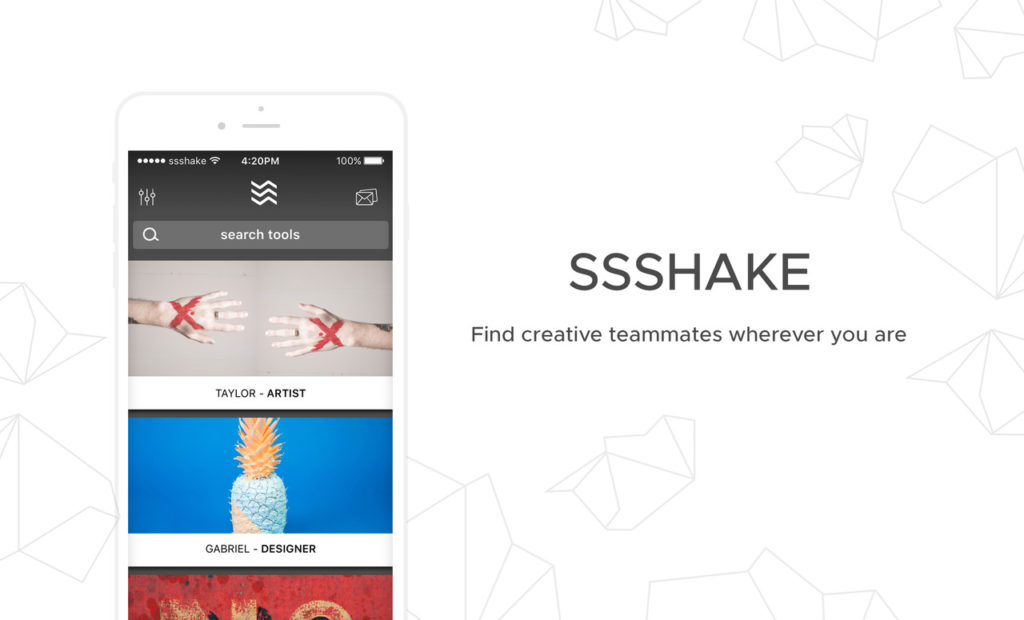


by Lisa Devaney | 10 Dec, 2016 | News
For years now, the team with Hai Media Group have been watching the news reports about the refugee crisis – and with the headlines, tears result. But what can be done?

With millions (more than 65 million globally according to the UNHCR) fleeing their homelands to try and stay alive and to make a safer better life in other parts of the world – how can anybody help?
During this festive season, rather than buy gifts for our clients or send cards, we are admiring and contributing to the global effort of a group of hard working, generous members of the tech community who are trying to do their part in making a difference to the refugee community with Techfugees. This is a non-profit organization, which aims to bring creativity and innovation to the refugee community, which got its start back in 2015. Organizing conferences, workshops, hackathons and meetups around the world, all in an effort to generate tech solutions that can help refugees.
Joséphine Goube, one of the Directors of Techfugees, told us this week: “Our idea from the start has always been: refugees are human beings, that have lost it all and need to rebuild their lives: friends, family, networks. Technology, because it scales, has the power to make a difference. So let’s do make it happen.”
Techfugees was founded by Editor-At-Large of TechCrunch Mike Butcher, who recently was awarded an MBE, with the Queen’s birthday honours list. Petra Johansson is also a Director.
For the best projects, Techfugees works to implement these in the field.
At the recent TechCrunch Disrupt Hackathon, held in London in December 2016, three new projects to aid refugees emerged:
- RefuTweet aims to provide refugees on the move with the help they need by connecting with local individuals sympathetic to their cause.
- ResID: When refugees are in a foreign country they often have very limited papers with text information, papers which can be easily lost or stolen. ResID helps people never lose track of who they are.
- Sensei Hub provides a simple capture mobile app that photographs and records student test papers.
According to Techfugees website, As well as operational goals, such as becoming a sustainable organisation, Techfugees has defined five main focus areas of work where tech can have a significant impact. See these five areas in the infographic below.
Techfugees is even inspiring entrepreneurship among refugees. Hai Media Group especially admires this approach, for its positivity and offering of hope to millions in how they may rebuild their lives in a new community.
It is the festive season of 2016, and a time when many will give. We’ve donated to Techfugees and we hope you will also support this worthwhile organization. You can pledge to a crowdfunding campaign here. Or make a direct donation at the Techfugee website here.
You can also support Techfugees on social media by using the hashtag #Techfugees.
Like the Facebook Page.
Follow on Twitter.

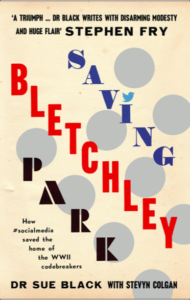
by Lisa Devaney | 25 Apr, 2016 | News
This story was first published by our Founder and Director Lisa Devaney with Brand Republic’s The Wall Blog UK, and you can find it here, or read below:
So often these days, news headlines are pock-marked with nasty tales of hacking incidents, online trolling, bullying and abuse that are setting a lot of people off from participating with any social media platform. But now and then, examples of how fantastic, caring and beneficial social media can be comes into public awareness and forces us to not ignore the good of this medium for all.

Saving Bletchley Park
In a new book Saving Bletchley Park written by Dr Sue Black OBE (@Dr_Black), with help from Stevyn Colgan, a fascinating story is told about how Twitter, and the power of digital and social media, strengthened and was instrumental in saving a near derelict World War II codebreakers headquarters at Bletchley Park. Recently released, and funded fully through a crowdfunding campaign orchestrated by the publishing company Unbound, the book is already a bestseller on Amazon.
If you are looking for that ray of sunshine in your social media case studies, or just want a positive example to explain to colleagues about how social media can work, this is a must read. I marvelled that it is a tale where old technology is saved by new technology, where modern Twitter, and other social channels, play a crucial role in helping preserve the place where modern computing took root, being the birthplace of Colossus and the work base of Alan Turing, who was key in cracking the codes generated by the Enigma machine.
In the book, the author shares so much about the step-by-step evolution of this valiant and dedicated effort of her, and colleagues, years of work to make sure it was not eradicated physically from the UK’s places of historic interest. Hundreds of people sought to preserve Bletchley Park over 20 years. It is likely that many in the UK, and beyond, will know that Bletchley Park is credited for having brought World War II to an end, two years earlier than expected, and to have saved an estimated 22 million lives with the top secret work of codebreaking. Nearly 10,000 people worked in cloaked roles, many being women, and all signed and sworn to a strict secrets act preventing them from speaking about their labour at the place. Sir Winston Churchill said of the codebreakers that they were “the geese that laid the golden egg and never cackled.”
What many may be surprised to learn is how decayed and near demise the site of this crucial turning point for the war was facing not long ago, until its rescuers became activists for the historic venue’s survival. What Dr. Black’s book reveals is a combination of historic information, human anecdotes, and a really good case study for how social media can flip a forgotten relic into public consciousness, over time.
Along the way, Dr Black, using Twitter, along with blogging and other social media channels, found that the digital generation’s freely available tools could help her make people care, and do something to save Bletchley Park. In her tale, you’ll read about how some of the UK’s popular Twitter aficionados like Christian Payne (@documentally), Jamillah Knowles (@jemimah_knight), Mike Sizemore (@sizemore), the Tuttle Club, and more, played a role in raising awareness for the Bletchley Park cause. So much so, that the effort won the attention of celebrity Stephen Fry and, also attracted support and attention from various members of the Royal family, and executives from Google.
Sure, social media wasn’t the only contributing factor, but, as you will find out in the book, it was a major catalyst and turning point for the campaign. The book includes Dr. Black’s tips and real-life, reality based, proven approaches to using social media, and her own journey from intrepidation and low confidence with the medium, to being a fearless advocate of its powers.
As Dr Black describes in this passage from her book:
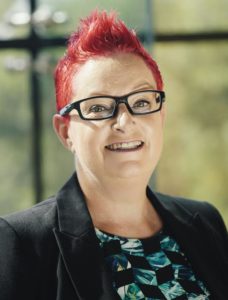
Dr Sue Black OBE, photo by ali Tollervey
“Social media has allowed me to be myself, the me that was always there inside but a bit scared to come out. I grew up a shy person, scared to voice my opinions in case I offended someone. Over the years, I’ve forced myself to speak when something needs changing. Social media has shown me that there are many people out there that feel the same way I do and that it’s fine to say what I think in public. It’s a simple lesson, but having grown up a girl in the 1960s and ‘70s, it’s diametrically opposed to what I grew up being told. “Don’t speak until you are spoken to” was a frequently used phrase in my upbringing, something I have in common with a whole generation of girls. I’m so glad that women are finally finding their voice. It may cause some change that will be difficult for society as a whole to deal with, but in the long run it will benefit us all.”

by Lisa Devaney | 22 Mar, 2016 | News
‘The Games Europe Plays’ invites kids and adults for inter-generational learning and fun with the most exciting digital games at the Finnish Institute in London.
The Finnish Institute in London and EUNIC London are proud to host The Games Europe Plays, an interactive games exhibition from 2-10 April, as part of the London Games Festival Fringe Programme. The Exhibition showcases the most exciting independent European digital games for young people (4+) and families in the heart of London in King’s Cross.
The exhibition is the first in a series of three shows initiated by EUNIC London and curated by body technologist and digital
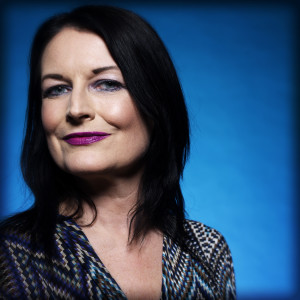
Ghislaine Boddington
expert Ghislaine Boddington. They will bring to the UK the best independent and innovative games made in Europe with a strong emphasis on design, virtual interactivity and physical engagement.
The exhibition at the Finnish Institute in London features children’s games by Gigglebug (Finland), Toca Boca (Sweden), Tine Bech (Denmark/UK), Peter Lu & Lea Schönfelder (Germany) and Amanita (Czech Republic) all looking at learning through play, multi-identity, representation and future skills for young people.
“Gaming today has gone digital and is evolving into some wonderful new forms, enabling us to envision future scenarios in which gaming experiences are at the centre of work and play. New formats use the whole of our bodies into the game, both through physical interactions and through exploring digital representations of ourselves. The exhibition allows us to explore a European perspective on the evolution of games for the future,” said Ghislaine Boddington.
The Games Europe Plays
Finnish Institute, London, Unit 1, 3 York Way, London, N1C 4AE
http://www.finnish-institute.org.uk
The exhibition is open to the public from 2-10 April 2016: Monday, Wednesday – Friday from 12 AM – 6 PM and Tuesday from 12 AM – 8 PM. It is open Saturday and Sunday from 11 AM – 5 PM.
*For everyone from 4 years old.
Use the hashtag #GamesEU to connect on Twitter
PRESS VIEW
Friday, 1 April at 11 AM. RSVP to animaya.grant@finnish-institute.org.uk
Opening
Friday, 1 April from 6:30 PM. Families welcome! RSVP to animaya.grant@finnish-institute.org.uk
Panel Debate
Participate on Thursday, 7 April at 6 PM for Game Play Europe – a conversation on making and playing today and in the future, moderated by curator Ghislaine Boddington. Panellists include journalist and TV presenter Kate Russell (UK), play artist Tine Bech (Denmakrt/UK) and the Director of the Finnish game industry hub neogames KooPee Hiltunen. The debate will look at career developments for young people in the future gaming industry, creativity/collaboration in design, gender perspectives in gaming and the STEAM (Science, Technology, Engineering, Art & Design, Maths) agenda. RSVP to: anna.popponen@finnish-institute.org.uk
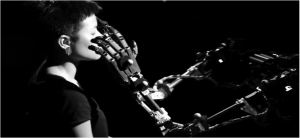
by Lisa Devaney | 14 Feb, 2015 | News
NESTA‘s second FutureFest is being held March 14-15 at Vinopolis in London.

Robots will be at FutureFest 2015
FutureFest is a weekend of immersive experiences, compelling performances and radical speakers to excite, and challenge perceptions of the future. FutureFest is not designed as a traditional static event but as a multi-format festival, which gives visitors ample opportunity to take self-guided journeys. The programme will span debate, discussion, performances, installations and immersive experiences.
The content is anchored by six themes, which examine the future of: democracy, global cities, machine and human interaction, money, music and thrills.
Speaker highlights include NSA whistle-blower Edward Snowden, visionary musician George Clinton, journalist and best-selling author Jon Ronson, human rights lawyer Baroness Helena Kennedy QC, and musician Matthew Herbert. The event will also feature innovative installations and demonstrations including NEUROSIS – the world’s first neurological thrill ride, Paul A. Young and Morgaine Gaye’s Sweetshop of the Future and Emotive City by architecture firm Minimiaforms.
Also in store are robots!
body>data>space is thrilled to announce that Blind Robot, My Robot Companion and Robot World will be exhibited at FutureFest 2015. body>data>space Creative Director Ghislaine Boddington has curated the Future Machines part of the FutureFest exhibition.
Blind Robot is an interactive robotics artwork developed by Louis Philippe Demers. In this installation, visitors are invited to sit down in front of and engage into a non-verbal dialogue with the Blind Robot. The robot delicately explores the body, mostly the face, of the visitor in a manner that recalls the beauty of the touch of blind people wishing to familiarise themselves with a person or an object. This is the first showing of Blind Robot in the UK. The Blind Robot is a 2011-12 development commission for the Robots and Avatars project (body>data>space, KIBLA, AltArt). Commissioned by body>data>space and the National Theatre, it premiered at KIBLA, Slovenia in October 2012.
‘My Robot Companion: Familiar’ is a project exploring social-robotics by Anna Dumitriu and Alex May. This robot is able to take on the appearance of any face it sees or even combine features from a group of faces in order to promote bonding with it. A previous version of this project was exhibited in September 2012 as part of the Robot and Avatars Exhibition at 12 Star Gallery in London.
Robot World is a non-verbal documentary by Martin Hans Schmitt which depicts the evolution of robots from a mechanical somnambulist to an autonomous sensorium. An hypnotic journey exploring robots as our alternate doubles, Robot World was exhibited as part of Robots and Avatars Exhibition at FACT, Liverpool and at KIBLA, Slovenia.
More artworks and panels curated by body>data>space with FutureFest to be revealed soon.
About body>data>space
We are East London based digital pioneers specialised in the visionary integration of the body at the centre of digital interaction. We create innovative connections between performance, architecture, virtual worlds and new media. A long term associate artist of body>data>space, Nick Rothwell is a composer, performer, software architect, programmer and sound artist. www.bodydataspace.net
Join in the converstaion with #futurefest

by Lisa Devaney | 5 Aug, 2014 | News
The summer holidays are among us, and if you’re looking for a super-cool technology exhibition interesting for parents and kids – Barbican’s Digital Revolution is the one!
Located inside the Barbican Centre, Digital Revolution is a must-see technology exhibit that celebrates past, present and future gadgets.
Upon entering you’re greeted with a blast from the past of all things electronic, anything from Nintendo’s First Generation Gameboy to the first Apple computer.
As visitors continue to move through the exhibition, they are sent on a journey through time and advanced technology.
Barbican’s Digital Revolution is an interactive exhibit, and promises to keep you entertained. Visitors can play PacMan, Playstation’s 1st Generation, and use their bodies to form shadow-computer generated imagery.
Hai Media Group’s personal favourite has to be Will.i.am’s music installation #pyramidi. Pyramidi is described as the ‘future of music’.
The Projection Mapping Visual Art Show is made up of three robotic pyramids that listens to a piece of music, and plays it back in unison. Will chose “Dreaming Of The Future” – a song that he produced – to showcase Pyramidi’s best features.
Another project that featured in Barbican’s Digital Revolution is Will.i.am’s i.am.Angel Foundation showcase (a charity that specialises in supporting children from disadvantaged backgrounds). Students presented gadgets which they created as part of the programme.
If you’d like to attend Digital Revolution, you’ve got to be quick as it concludes on 14th September
RATING: 5*
PRICES: £12.50 (standard), £8.75 (yellow membership), £8.50 (students), £10.50 (unemployed), £10.50 (senior), £5.00 (child 5-12y/o), £8.50 (young person 12-17y/o)
– Miamii Mansour



